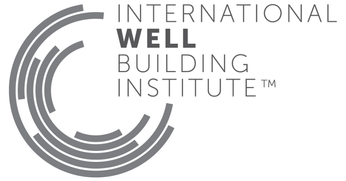Get answers from our community of experts in record time.
Join now- Technical Forums
- :
- Sensors
- :
- Re: Monitoring Carbon Dioxide for Improved Cognitive Function 🧠
Monitoring Carbon Dioxide for Improved Cognitive Function 🧠
- Subscribe to RSS Feed
- Mark Topic as New
- Mark Topic as Read
- Float this Topic for Current User
- Bookmark
- Subscribe
- Mute
- Printer Friendly Page
- Mark as New
- Bookmark
- Subscribe
- Mute
- Subscribe to RSS Feed
- Permalink
- Report Inappropriate Content
Monitoring Carbon Dioxide for Improved Cognitive Function 🧠
Do you want to be as energized, focused, and comfortable as possible at all times?
Our ability to think clearly and perform well can be directly impacted by the quality of the air we breathe, which is why it is important to monitor key metrics and take action when they reach concentrations that are too high.
Carbon dioxide (CO2), in particular, has a proven effect on cognitive function. Cognitive function refers to our ability to leverage different mental skills, including learning, thinking, reasoning, and decision making. When cognitive function is impacted, it can result in slower response times, worsened memory, and decreased productivity. This can be particularly disruptive to employees and students who are often performing tasks that require a high level of cognitive function.
CO2 impact on employees in a workplace
A paper published by the Harvard T.H. Chan School of Public Health shows that for every 500ppm increase in CO2, employee response times were 1.4-1.8% slower. This study, amongst others, highlights that higher CO2 levels in office buildings are associated with decreased employee performance.
The relationship between air quality and productivity is so pronounced that EPA has coined the “sick building syndrome” (SBS), which describes a situation in which building occupants experience acute health and comfort effects that appear to be linked to time spent in a building. It has been estimated that as many as 1.2 million commercial buildings have characteristics of sick building syndrome. Designing a healthier building, which involves improving ventilation to bring in fresh air so that CO2 levels are decreased, can boost workers’ performance, make them feel more comfortable in the office, and even help them sleep better at night.
Building certifications such as WELL and LEED, which many office buildings are aspiring to obtain in order to attract better talent, incorporate CO2 as a metric to track. WELL has already certified over 4 billion square feet of space, highlighting its rapid growth since launching in 2014 due to the growing focus on health and wellbeing amongst companies across the world.
CO2 impact on students
In addition to hindering employees, high levels of carbon dioxide can also negatively impact student learning outcomes, given that students spend a large portion of their time in classrooms.
A study from MIT found that exposure to poor indoor air quality is associated with significantly lower test results: a one standard deviation increase in the school-term average daily peak of CO2 levels leads to a 0.11 standard deviation decrease in subsequent test scores. In spite of this, in some parts of the world, 1 in 8 classrooms have CO2 levels that are too high.
Governments across the world including in the UK, France, and Netherlands have begun to offer classroom design criteria that includes CO2 monitors because they understand the impact CO2 can have on student learning outcomes. In the US, some states such as California and Colorado are also now recommending or mandating CO2 monitoring in schools. California’s AB 2332 recommends imposing a state-mandated local program involving the adoption of CO2 monitors in classrooms to provide the minimum ventilation rate, based on several reports that show elevated CO2 levels cause drowsiness and inattention.
Monitor CO2 with MT15
MT15 indoor air quality with CO2 sensor offers precise CO2 monitoring to help alert relevant staff members when rooms have stale air and require attention. MT15 detects CO2 with a high level of accuracy and samples every 30 seconds so that organizations can see frequent updates and not miss elevated air quality events that require their attention.
Users can access information about the CO2 levels in a room in several ways, depending on their needs:
1️⃣Designated recipients can receive instant alerts when CO2 thresholds are exceeded, enabling them to respond rapidly. Alerts can be sent via: SMS, email, push notification, and webhook.
2️⃣People in the room can view the LED visual indicator on the sensor to understand whether they are breathing healthy air. The LED visual indicator on the sensor shows green, yellow, or red depending on the air quality in the room. The indicator can also be turned off in case organizations prefer not to show information to people in a room.
3️⃣Facilities teams can conduct retroactive analyses of the space and view air quality across an entire floor or building for space planning and design purposes.
Meraki dashboard charts offer historical CO2 data, as well as data on the five other environmental metrics, across customizable periods of time. To draw the user to time periods of interest, chart backgrounds are shaded in red when the sensor is an alerting state,
Additionally, MT15 is integrated with Cisco Spaces to plot CO2 information against a floor plan and intuitively summarize metrics for facilities managers to use.
To learn more, head to our MT15 webpage or begin a trial and boost your confidence in the health of your building. 🌬
- Mark as New
- Bookmark
- Subscribe
- Mute
- Subscribe to RSS Feed
- Permalink
- Report Inappropriate Content
Very interesting research.
>A paper published by the Harvard T.H. Chan School of Public Health shows that for every 500ppm increase in CO2, employee response times were 1.4-1.8% slower
Does the inverse also apply? If you remove all CO2 do you end up with a superhuman workforce? 🙂
- Mark as New
- Bookmark
- Subscribe
- Mute
- Subscribe to RSS Feed
- Permalink
- Report Inappropriate Content
Try out that experiment and let me know the results 😂






